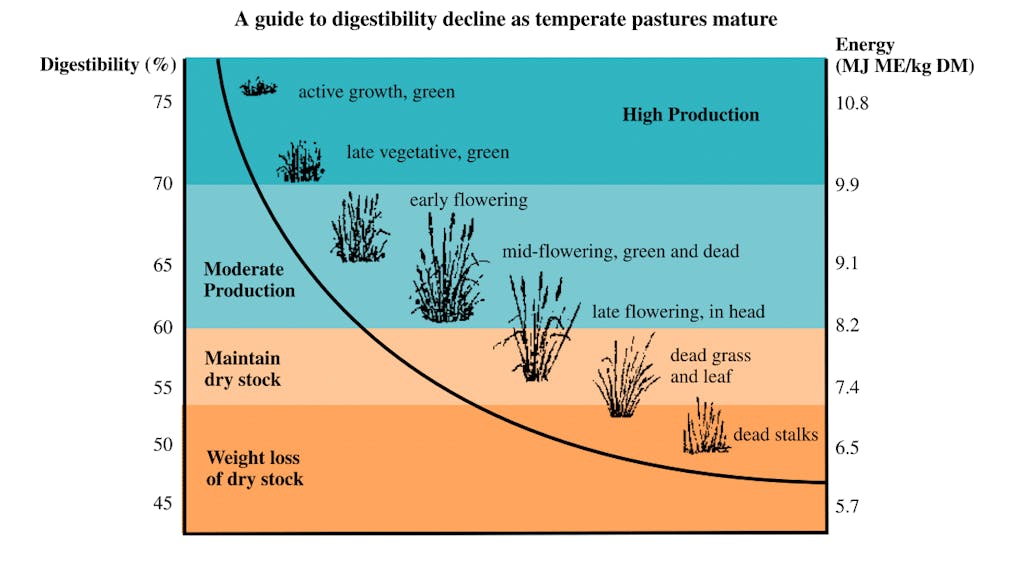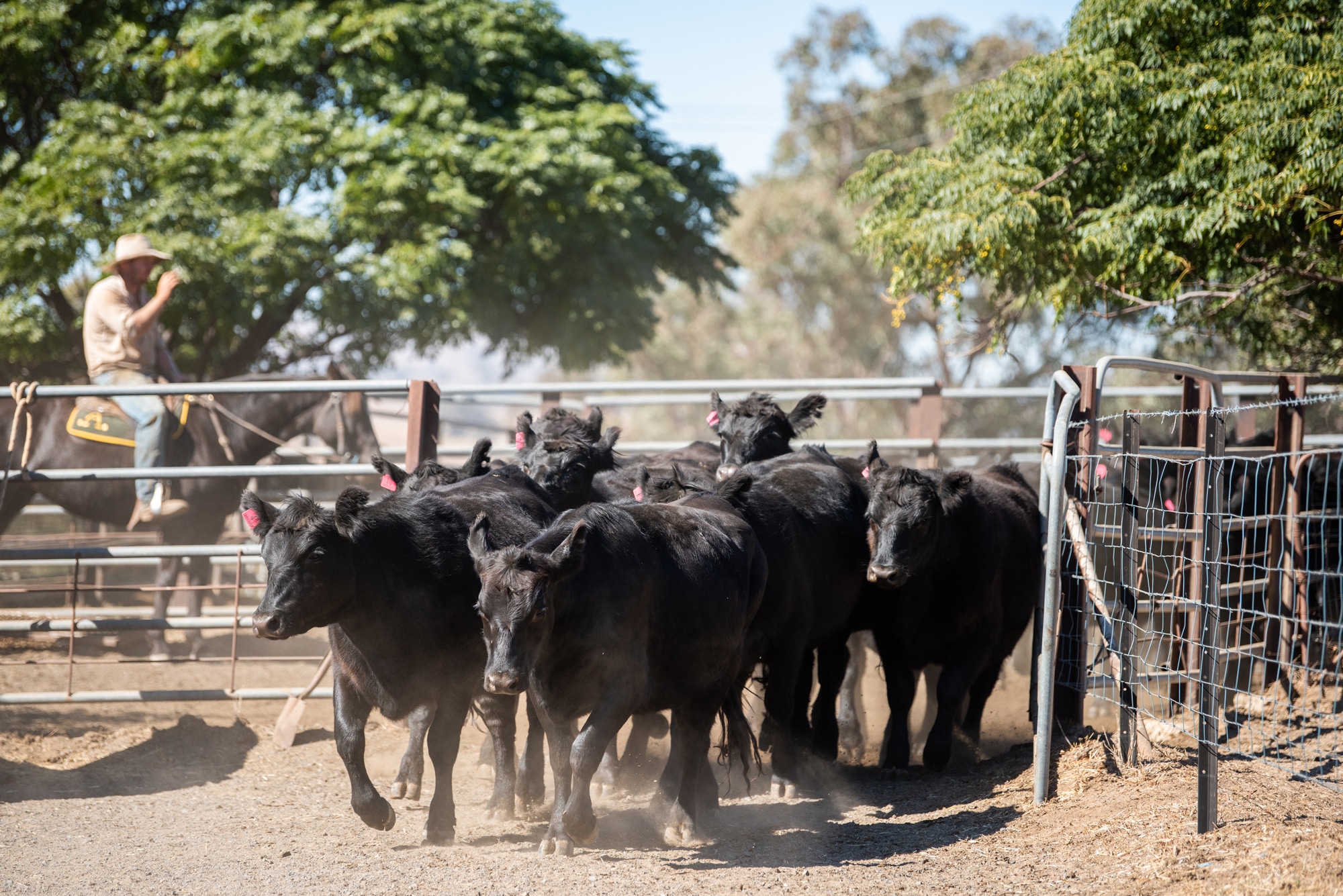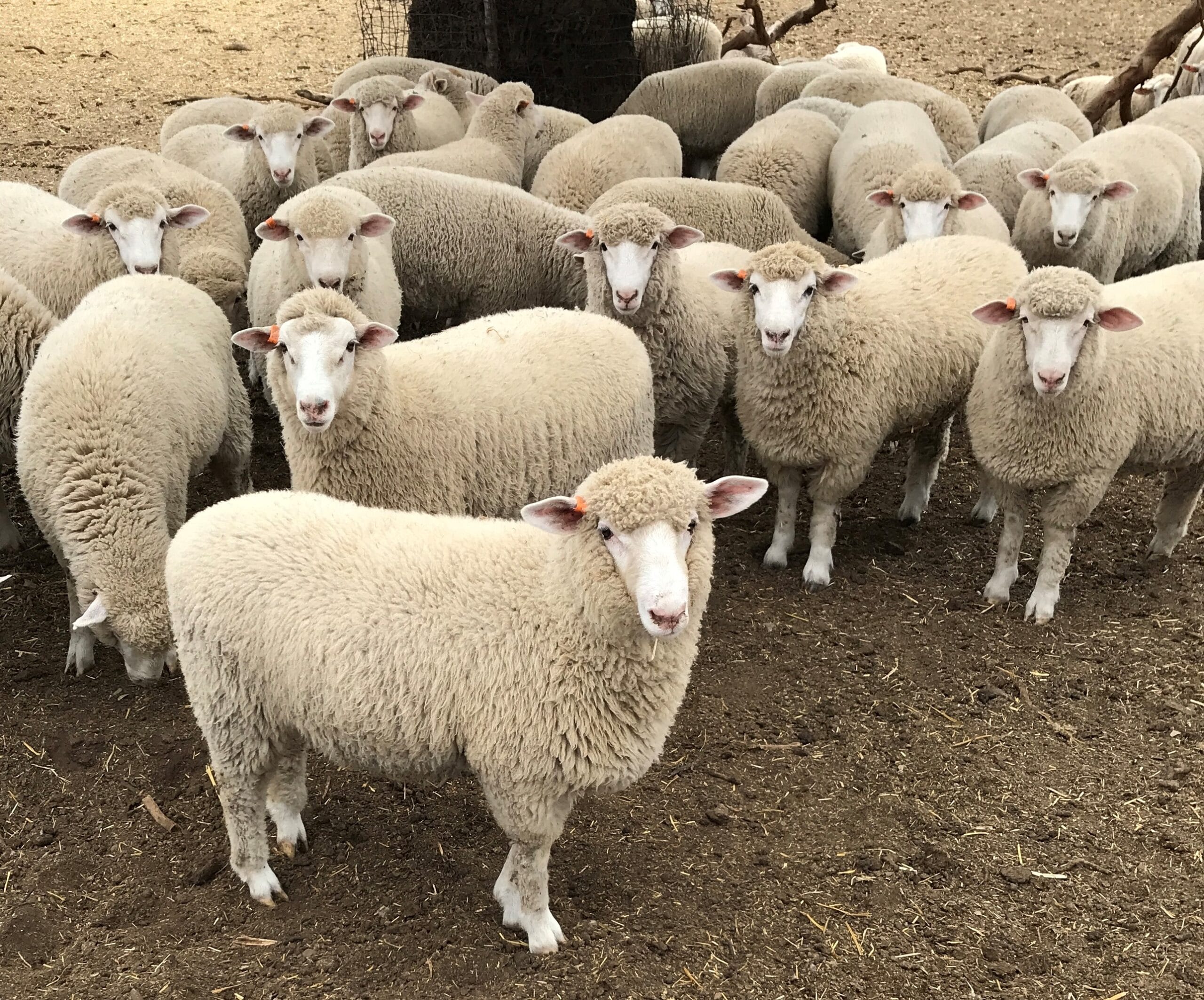Assessing pasture quantity and quality
In-brief
• Managing pasture quantity and quality across different seasons, are crucial aspects of optimising livestock performance.
• Pasture budgeting provides opportunities to both increase carry capacity or identify feed shortages in advance of the surplus or deficit.
• Simple pasture measurement tools and budgeting systems can be used consistently at key points of growing seasons. A simple system is better than no system at all and the MLA pasture ruler is a useful, free tool available to all Australian livestock producers.
• Newer or more complicated tools are not necessarily a better option for producers on farm. It is better to focus on how to best use pasture resources to execute a plan than focus on improving accuracy of measurement.
Introduction
Pasture assessment is a critical aspect of any pastoral operation. Whether structured or informal, measurements and pasture budgets are an integral aspect of managing pasture feedbase. Pasture quality and availability determine stock productivity whether measured via body condition, reproduction rates and liveweight gain.
The common attribute to successful pasture management is routine monitoring of quality and quantity at critical times of the year. Typically, these critical times are associated with changes in growing season or during reduced rainfall. We use pasture quantity and indicative pasture quality to assign pasture to differing livestock classes; as a trigger to move livestock to another area; determine if supplementary feeding, increasing or decreasing stocking rates is required; and to forward plan into the future.
To use pasture information for planning purposes we need to collate this data into some form of system. Whilst we will note go into the detail of how to develop a pasture budget due to complexity of this process, it is worth highlighting there are many options available to assist producers. Industry developed options include:
- EverGraze Feedbase Planning and Budgeting Tool
- Meat & Livestock Australia (MLA) Feed Demand Calculator
- MLA Feedbase planning and Budgeting tool
Regardless of the method of pasture budgeting used, there are some common attributes in systems that are used consistently and effectively in pastoral operations. These include:
- The system is easy to use and navigate. There is a minimal data entry required and outputs are easy to interpret.
- The calculations in the model are transparent and parameters can be customised to your operation. Beware of products where the developer doesn’t explain calculations or does not allow for changes in model assumptions. You should be able to enter/edit:
- A variety of different pasture species/mix and growth curves
- Customise growth rates by species and month
- Different livestock classes with different maintenance requirements or growth targets
- Pasture wastage factor
- An appropriate pasture wastage factor is selected for the operation. This is often understated in pastoral operations as for most systems, it is also not possibly to accurately determine this. For sheep and cattle on green feed (>20 dse/ha stocking rate) a minimum wastage range of 35-40% is appropriate. For lower stocking rates or dried off feed this could be ~50% wastage.
- Pasture levels do not routinely exceed >2,500 kg DM/ha. As pasture quantity increases beyond this point quality decreases. Lower pasture leaves die-off and pasture utilisation decreases due given losses to trampling or selective grazing.
- Everyone involved in the operation understands the aim of pasture management system. They talk the same terminology and understand how day-to-day operational decisions affect pasture and then livestock performance.
Assessing pasture quantity
Typically, pasture quantity is measured as pasture mass or feed on offer (FOO). Feed-on-offer is simply a measure of all pasture/feed in the paddock, regardless of whether an animal can physically access this feed. Pasture mass typically assumes 300 kg DM/ha is unavailable to sheep and 600 kg DM/ha for cattle. This is because stock cannot effectively consume sufficient pasture to achieve maintenance requirements below this level. Thus, estimates of pasture mass are lower than the same estimate of FOO as per the examples in table 1 below.
| Livestock Class | Feed-on-offer (kg DM/ha) | Pasture mass equivalent (Kg DM/ha) |
|---|---|---|
| Sheep | 300 | 0 |
| Sheep | 1,500 | 1,200 |
| Cattle | 600 | 0 |
| Cattle | 1,500 | 900 |
As there are various tools used to assess pasture quantity, it is important to understand the limitations of each tool. Most tools can give misleading results when used on annual pastures that are highly variable in composition, in the early establishment phase of growth, or intensively grazed clover-dominant pastures in spring. This can be overcome by adjustments for certain conditions, though ideally will also require calibration.
In an ideal situation, all methods of measurements, need to be calibrated for different pasture type and seasonal variables. This involves cutting, drying and weighing representative pasture samples. Though time consuming it is essential if focussed on accuracy of pasture readings for these different variables. The availability of air-fryers now also greatly reduces the drying operation time and process complexity. Is it essential to calibrate with pasture cuts? No, but you must be willing to accept some inaccuracies in measurements under different conditions.
For the purposes of this article, let’s group some pasture tools together and look at the suitability of these tools for sheep and beef graziers. These will be:
- The MLA pasture ruler
- Rising plate meters
- Electronic/capacitance probes
- Pasture meters such EllinBank Pasture reader or C-Dax pasture meter
- Satellite monitoring, usually by NVDI measurements
There are varying degrees of labour requirements for each method. This is to collect and enter data dependent which will also be dependent on the level of automation of data logging for the product. Refer to table 2 for further details on each measurement option.
| Tool | Measure | Pros | Cons |
|---|---|---|---|
| The MLA pasture ruler | Green pasture height | Free tool; ease of use. Excludes dead grass. | Variation between individuals assessing. Does not include dead grass DM. |
| Rising plate meters | Total pasture mass (height & density), green and dry standing feed | Consistency of readings between users. Some automation of data capture availability | Measures all feed, not green feed. High labour requirement. Includes dead grass DM. |
| Electronic / capacitance probes | Capacitance which is has been correlated to dry matter of green material only | Consistency of readings between users. Some automation of data capture availability. Excludes dead grass. | Accuracy declines with free moisture present in pasture. Expensive. Only good as calibration curves. Does not include dead grass DM. Proven to be inaccurate for management purposes compared to other methods. |
| Pasture meters (EllinBank Pasture reader or C-Dax pasture meter) | Total pasture height (green and dry) | Consistency of readings between users. Excludes dead grass. Frequency/number of readings decreases sampling error. | Cost of unit and high labour requirement. Includes dead grass DM. |
| Satellite monitoring | Usually measures changes in NVDI or other spectrums which is correlated to pasture height | Level of automation and consistency. Can be done remotely for multiple paddocks/properties | On-going subscriptions = high cost. Not accurate as a standalone tool – needs calibration via other tools or livestock grazing events entered. |
The final factor for consideration in any pasture measuring tool is how it correlates to animal grazing behaviour. Livestock will naturally select higher quality feed over lower quality feed in most instances. Hence, they will selectively graze younger, green feed over dead grass.
Despite the recent hype around satellite monitoring, the accuracy for on-farm monitoring is highly questionable. Product offerings quote high accuracy and correlations from trials, but this is only achieved when combining with frequent calibration cuts or when used in combination with other products such as the rising plate meter. These offerings may improve in the future but for the time being, like capacitance probes, are not viable, accurate options for producers.
Despite potential variations between individual assessors, the MLA pasture ruler remains one of the best options for most beef and sheep producers. To order your free MLA pasture ruler call 1800 023 100 or click on this link. For those wishing to get more accurate, this comes at a cost, mainly in labour and then purchase the unit. Consider a rising plate meter or C-Dax meter. Both are readily available in Australia and usually accompanied by a software package allowing you to capture and monitor data with relative ease.
Assessing pasture quality
Regardless of the temperate pasture species, we see fairly consistent quality curves when mapping most legume and grasses for quality by growth stage. For on-farm management purposes, plant maturity remains the best indicator of pasture. As a rule, we target grazing a pasture stage in middle to late vegetative stage. This is the optimal point between maximising dry matter growth with minimal detriment to plant quality. Refer to diagram 1 for the relationship in plant digestibility (%) and energy (MJ ME/kg DM) by growth stage for temperate pasture species.

Though this seems a simplistic approach, quality curves have been extensively validated by research and data. Often the next question is ‘should I be testing pasture quality on-farm’? There is no real value in testing pasture routinely given the natural variation in results and lack of opportunity to act on this data. This natural variation comes about in digestibility, energy, and protein levels dependant on species type; growth/harvest stage; and time of year.
Where a selective pasture quality test can be useful is to increase your understanding of pasture quality in your operation and the potential impacts on livestock performance. Specific areas to investigate:
- Is there excessive protein in early growth stages in your pastures during late autumn – early spring? At >28% protein (DM basis) there is associated energy requirements for an animal to excrete excess protein.
- Is there sufficient DM (>20%) to maintain feed in the gut in early growth pasture and grazing crops? Gut retention is required to allow sufficient time for digestion even in highly digestible/low fibre pastures.
- Nitrate levels in freshly fertilised pasture or grazing crops – very important if you have had nitrate poisoning occur in the past.
- When exactly does pasture quality drop away on-farm in late spring – summer? Given we are trying to utilise DM and maximise re-growth, we may not give pastures an opportunity to progress to maturity in this periods. Here a feed test can provide that specific insight.
- When conserving fodder on both standing feed and the final silage/hay product. It can be used to determine at what stage on-farm is the trade-off between yield and quality. If results are timely, pasture quality tests can be used to determine whether a crop should be baled for silage or hay.
Summary
Timely planning is required to capitalise on the better seasons through trading livestock. For pasture consider:
- Assessing your expected feed availability throughout the coming season using a feed budget.
- Thinking critically about pasture quality throughout the year and align this with achievable weight gain targets according to growing season.
- The best systems for pasture management are easily explained; are understood by all people in the business; and can be acted upon in a timely manner.
Join us for the next article as we explore “Using pasture information when deciding what to trade”.
We’ve also written another article that you may find useful: “How to Get a Livestock Loan to Support Your Business Growth.” Contact our agents today for more information on your livestock funding needs.
Author
Aggregate Consulting is an agricultural consultancy business based in Wagga Wagga in southern NSW.







